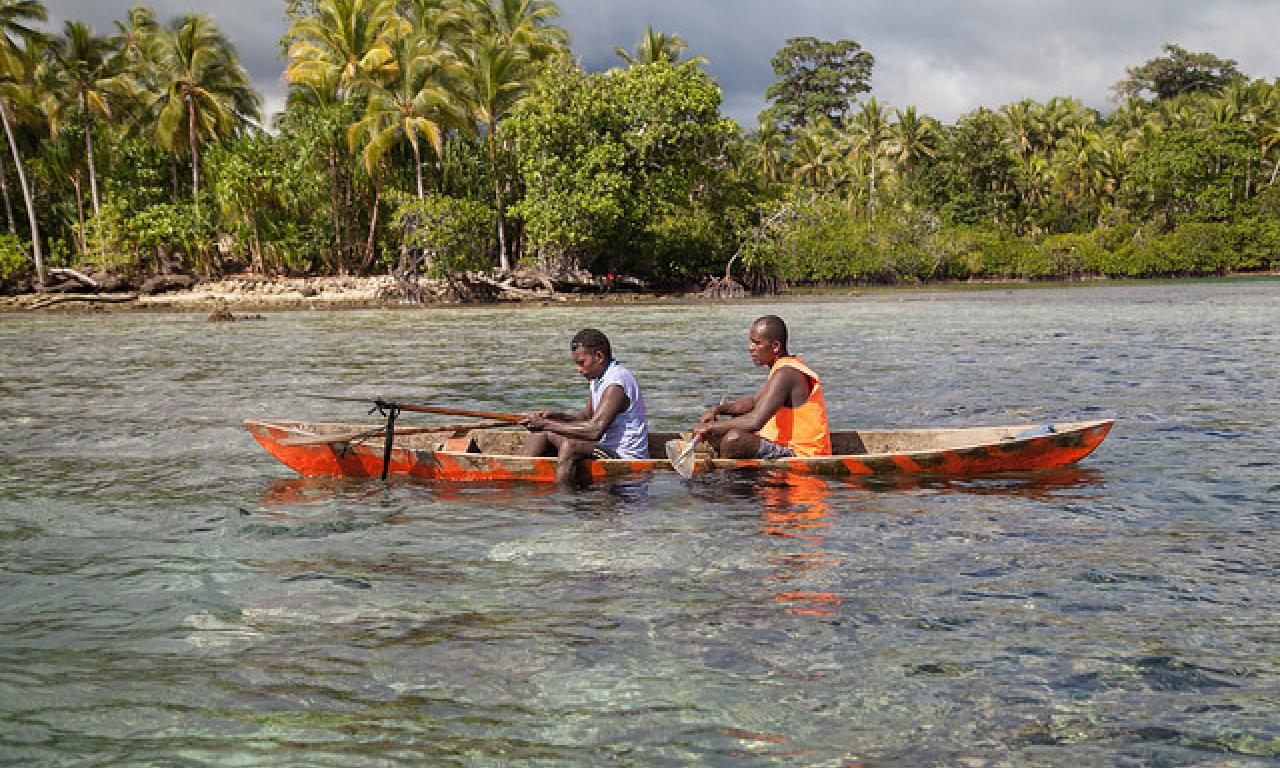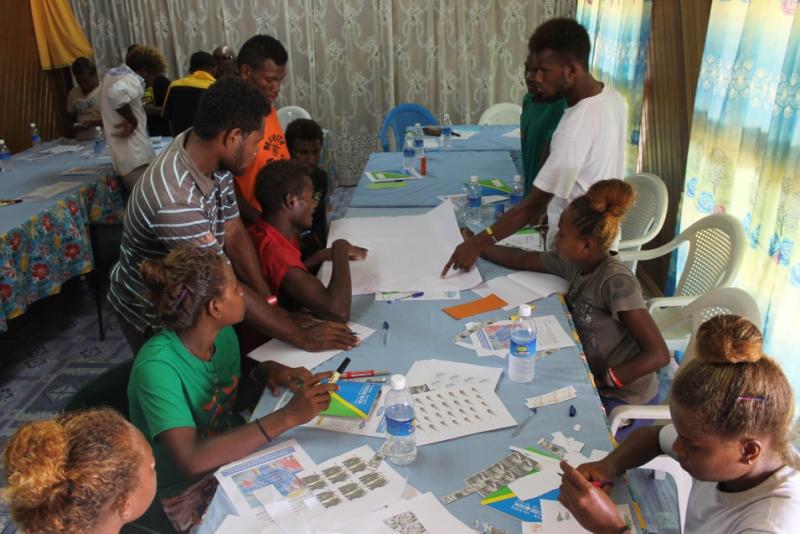
In Solomon Islands, where coastal resource decline and environmental degradation are increasingly putting livelihoods and food security at risk, the 'lite-touch approach' has been suggested as a more efficient and cost-effective way to establish and spread community-based resource management.
Recommended publications
- Spreading community-based resource management: Testing the ‘lite-touch’ approach in Solomon Islands
- Supporting community-based resource management in Solomon Islands: The role of provincial governments
- Lessons from implementing, adapting and sustaining community-based adaptive marine resource management
In Solomon Islands, where coastal resource decline and environmental degradation are increasingly putting livelihoods and food security at risk, community-based resource management (CBRM) is the main strategy for managing coastal fisheries.
It is estimated that hundreds of communities have already implemented some sort of CBRM with the support of government ministries, non-governmental organizations (NGOs) and research agencies. However, the different approaches employed by these partners are often intensive and long-term. Consequently, engagement with communities is slow, expensive and unlikely to reach the approximately 4,000 coastal communities in the geographically dispersed island state.
During a session on ‘Protecting livelihoods, promoting wellbeing and values’ at the 3rd World Small-Scale Fisheries Conference in Chiang Mai, Thailand from 22–26 October 2018, Grace Orirana, Senior Research Analyst and Auki Office Manager, WorldFish, presented the ‘lite-touch’ approach to CBRM and its effectiveness in supporting CBRM implementation.
Local ownership through lite-touch approach
The lite-touch approach has been suggested as a more efficient and cost-effective way to establish and spread CBRM. The approach is similar to other models but requires less intense or frequent engagements with communities, with the potential to promote local ownership of (rather than project dependency on) the process and outcomes. A local volunteer is typically assigned the role of ‘community champion’ and takes the lead in community activities.
WorldFish, as part of the Asian Development Bank Coral Triangle Initiative-funded project Strengthening Coastal and Marine Resource Management in the Coral Triangle of the Pacific (Phase 2), tested the effectiveness of the lite-touch approach in supporting Mararo village to implement CBRM and act as a ‘core’ community to encourage surrounding communities to follow suit. Mararo is a remote community in East ‘Are’are, Malaita Province. Factors including overharvesting of marine resources, use of destructive gear, and changing values and beliefs have weakened traditional management practices.
WorldFish made five visits to Mararo over two years to collect data, provide training to specific groups and assist with the development of a resource management plan.

One of the main strategies employed in Solomon Islands to spread CBRM has been ‘look and learn’ trips, where representatives from communities that are not currently implementing CBRM visit a community that is successfully doing so.
“With this in mind, we also invested in building the capacity of Mararo to increase knowledge of resource management and to make community members more effective communicators,” says Orirana. “For example, we trained youth in marine resource monitoring. They first used this knowledge to monitor their own managed area and later to develop messages they wanted to share with youth from other communities.”
Follow-up research was conducted in the 14 villages in East Are’are that had received awareness presentations from representatives from Mararo. “We found that the use of Mararo’s informal networks was effective for spreading CBRM information, and helped to overcome challenges of geographic isolation and high costs of logistics. As a result, two of the 14 villages had since initiated CBRM.”
https://www.youtube.com/watch?v=iYpRhKpqq3s
Reduced reliance on external staff
The case of Mararo suggests that the lite-touch approach can be successful in promoting the implementation and spread of CBRM at lower cost. Mararo was effective as a core site in terms of raising awareness and sharing experiences and knowledge with surrounding communities as well as motivating them to take management action themselves.
By reducing the reliance on external staff and the distances traveled, the major expenses may be greatly reduced. In the East ‘Are’are example, the cost of the awareness-raising activities was around USD 3,500, about half of which was boat hire and fuel. Another case of ‘regular’ CBRM implementation in Lau, Malaita, also showed that the major expenditures were transport and technical advice, with travel and community/committee meetings taking up the most time.
“Despite the success seen in Mararo, it is clear that other villages were less able to implement CBRM,” Orirana concludes. “Ultimately, our results indicate that in some communities, if declining coastal resources are a concern, additional support from an external partner may be necessary to enable implementation and spread of CBRM.”
